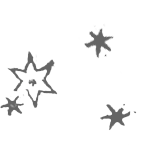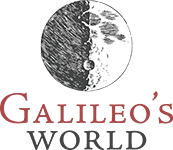Starry Messenger
Sidereus nuncius
When Galileo heard news of telescopes invented in the Netherlands he worked out the underlying geometry and crafted one of his own design. In this work, Galileo published the first observations of the heavens made with the telescope. His sensational discoveries included mountains on the Moon, vast numbers of previously undetected stars and four satellites of Jupiter. (On display in Bizzell Memorial Library, Fall 2015; Fred Jones Jr. Museum of Art, Spring 2016.)
Defense Against the Calumnies and Impostures of Baldessar Capra!
Difesa Contro alle Calunnie & Imposture di Baldessar Capra
Galileo published his second printed book to establish his priority rights and to inform Cosimo de Medici of the legal judgment against Capra. This copy, bound with the Compasso, is inscribed by Galileo to a Florentine physician. It contains other handwritten notes by Galileo as well.
Dialogue on the Two Chief Systems of the World
Dialogo sopra i Due Massimi Sistemi del Mondo
This is Galileo’s witty and entertaining dialogue in defense of Copernicus. In the frontispiece, Aristotle and Ptolemy hold an Earth-centered armillary sphere (left). Copernicus holds a Sun-centered model of the universe (right). Just two systems appear in the Dialogo; Galileo nowhere mentions the Tychonic system then favored by most astronomers. Galileo inserted statements about the hypothetical character of the work in the preface and conclusion. Nevertheless, the book as a whole was anything but even-handed, contrary to instructions issued to Galileo in 1616. Once published, Urban VIII gave orders for the Dialogo to be recalled and summoned Galileo to Rome for trial. This copy is one of four first editions of Galileo held by OU which contain Galileo’s own handwriting.
The Operations of the Geometrical and Military Compass, 1606
Le Operazioni del Compasso Geometrico e Militare
Galileo dedicated the manual for his engineering compass to young Cosimo II de Medici, whom he had tutored in mathematics the previous summer. Galileo had the instrument made in his own home, and supplemented his university income by teaching young gentlemen how to use it. The OU copy of Galileo's first and rarest printed book contains his own marginal notes, including corrections which were quickly incorporated into subsequent copies of the 1st printed edition. Observe how the fresh type cut deeply into the paper.





